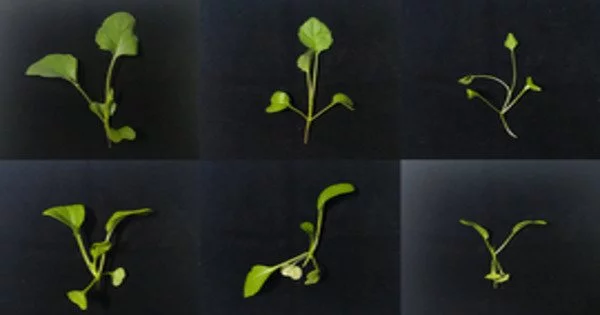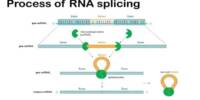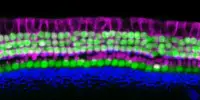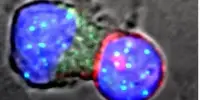Contrary to popular belief, the defense hormones salicylic acid and jasmonic acid do not always compete for control of plant chemical defenses against pests and diseases. The interaction of both hormones in trees can actually increase plant resistance.
In a new study on poplars, researchers from the Max Planck Institute for Chemical Ecology reach this result. Higher levels of jasmonic acid were also detected in poplars that had been engineered to produce higher levels of salicylic acid or that had been treated with salicylic acid, according to the researchers. Plants with higher levels of both hormones were also more resistant to the rust fungus Melamspora larici-populina, with no influence on growth. Knowledge of the positive interaction of these hormones involved in plant resistance could help to better protect poplars and other trees against pathogens.
Plant hormones, also known as phytohormones, regulate plant growth and development. They also regulate plant immunological responses to microbial diseases such pathogenic fungus. Until date, scientists have agreed that the signaling pathways of the defense hormones salicylic acid and jasmonic acid function in opposite directions. Thus, if plants produce more salicylic acid, the formation of jasmonic acid is inhibited, and vice versa. In investigations of the model plant Arabidopsis thaliana (thale cress) and many other annual plants, scientists have repeatedly demonstrated this detrimental interplay.
Contrary to the assumption that the salicylic acid and jasmonic acid hormone signaling pathways work in an opposite manner, we had already observed in our earlier studies on poplar trees that both of these hormones increase in response to infection by pathogenic fungi.
Chhana Ullah
“Contrary to the assumption that the salicylic acid and jasmonic acid hormone signaling pathways work in an opposite manner, we had already observed in our earlier studies on poplar trees that both of these hormones increase in response to infection by pathogenic fungi. Therefore, the main research question was to determine the interaction between these two defense hormones in poplar,” Chhana Ullah, first author of the publication, explains the starting point of the current study.
To test how salicylic acid levels affect jasmonic acid synthesis, the scientists genetically engineered experimental plants of black poplar (Populus nigra) native to Germany to produce more salicylic acid than control plants. In a separate experiment, they administered salicylic acid to the leaves of genetically unaltered poplar plants. “We modified salicylic acid levels in poplar through genetic engineering and direct chemical application, followed by thorough chemical analysis of plants with and without fungal infection. This allowed us to isolate the effects of salicylic acid from other factors and demonstrate that it boosts jasmonic acid synthesis directly” Chhana Ullah explains.
Plants that contained high levels of salicylic acid also had higher concentrations of jasmonic acid. In addition, these plants produced more antimicrobial substances, known as flavonoids, even if there was no infection with a pathogen. Further comparative studies with plants that produced high levels of salicylic acid and control plants that had each been infected with the rust fungus Melamspora larici-populina showed that high levels of salicylic acid made poplars more resistant to fungal attack.
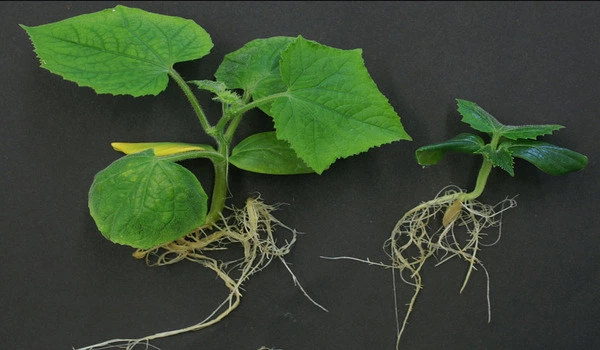
Surprisingly, increasing fungal resistance did not have a deleterious effect on plant growth, as has been reported in Arabidopsis and other annual herbs. In Arabidopsis, either salicylic acid or jasmonic acid controls the immunological response while suppressing the other hormone. Salicylic acid is produced in greater quantities following an attack by biotrophic pathogens that do not kill plant tissue and feed on living plant material, whereas jasmonic acid is produced in greater quantities following an attack by insects or necrotrophic pathogens that feed on dead plant tissue.
“The negative interplay between the defense hormones salicylic acid and jasmonic acid in plants like Arabidopsis enables the plant to prioritize protection against one kind of enemy. Small herbs like Arabidopsis may benefit from such a narrow focus because they lack the resources to defend against different kinds of enemies at once. This may also be the reason why Arabidopsis plants reduce their growth rate when in a defense mode,” says Jonathan Gershenzon, head of the Department of Biochemistry where the study was conducted.
Trees and other woody plants typically have more resources than annual herbs such as thale cress. Furthermore, because of their lengthy lifespan, trees are sometimes attacked by multiple adversaries at the same time, such as fungal and bacterial infections, leaf-eating caterpillars, and wood-destroying insects. For protection, they may have evolved to use the salicylic and jasmonic acid signaling pathways in tandem. The greater availability of resources in long-living woody plants may also explain why high salicylic acid concentrations have no effect on plant development in poplars.
The researchers were surprised to find that high levels of salicylic acid in poplars did not activate so-called pathogenesis-related (PR) genes, although these are established markers for the salicylic acid signaling pathway in Arabidopsis. “However, we found that the magnitude of PR gene induction was positively correlated with the susceptibility of poplar to rust. Apparently, the activation of PR genes in poplar is not regulated by salicylic acid signaling, but by a different mechanism,” Chhana Ullah explains.
The team of scientists lead by Chhana Ullah still has to figure out exactly how the molecular mechanism of the beneficial interaction between salicylic acid and jasmonic acid works in poplar. They also want to discover what role PR genes play in poplar and other woody plants. What is known is that understanding the favorable interaction of salicylic acid and jasmonic acid in poplar and other related trees could make a significant contribution to better safeguarding these plants against insect infestation and disease.
As Jonathan Gershenzon points out: “Poplars are regarded as “people’s trees” because of their many uses by humans, thus the genus name Populus: the Latin word for “people.” Poplars, which grow exceedingly quickly, are planted as short-rotation woody crops and are critical to the pulp and paper industry. They’re also good for biofuels.” Improving their security benefits us all.
